- JST Home
- /
- Strategic Basic Research Programs
- /
 CREST
CREST- /
- Research Director/
- Development of technology platforms for quantitative analysis of spatiotemporal multicellular interaction/
- [Multicellular interaction] Year Started : 2019
[Multicellular interaction] Year Started : 2019
Itaru Imayoshi
Measurement, manipulation, and prediction of interactions between the mechanical and biochemical fields
Grant No.:JPMJCR1921
Research Director
Itaru Imayoshi
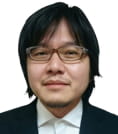
Professor
Graduate School of Biostudies
Kyoto University
Collaborator
| Keisuke Isobe | Senior Scientist Center for Advanced Photonics RIKEN |
| Satoru Okuda | Associate Professor Nano Life Science Institute Kanazawa University |
| Koji Takemiya | Section manager Electron tube division, Business planning Hamamatsu Photonics K.K. |
Outline
In the course of multi-cellular tissue development, cell proliferation, differentiation, migration, morphological change and functional expression should be proceeded in a highly coordinated manner. To understand mechanisms underlying these processes, we need to unveil the spatial and temporal patterns in interactions between the mechanical, biochemical and cell biological fields. Towards this end, we will develop integrated analytic platforms consisting of novel technologies in live imaging, light-mediated manipulation and computational simulation. Using these cutting edge technologies, we will investigate unsolved principles govenring development and maintenance of multi-cellular tissues and organs.
Mototsugu Eiraku
Research on a novel methodology for stem cell manipulation based on the elucidation of gene regulatory network of early human development
Grant No.:JPMJCR1922
Research Director
Mototsugu Eiraku
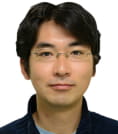
Professor
Institute for Life and Medical Sciences
Kyoto University
Collaborator
| Atsushi Mochizuki | Professor Institute for Life and Medical Sciences Kyoto University |
| Kosuke Yusa | professor Institute for Life and Medical Sciences Kyoto University |
Outline
The purpose of this study is to reproduce the early developmental process in vitro and establish a new methodology for inducing complex organs composed of three germ layers from human pluripotent stem cells. To achieve this, we will challenge the following three technological developments. 1) A comprehensive and quantitative description of gene regulatory network of human early development 2) Development of mathematical methods for predicting network structure and determining valid control points 3) Development of cell state control technology with high spatial and temporal resolution.
Satoshi Sawai
Deciphering multicellular order through morphodynamic spectrum
Grant No.:JPMJCR1923
Research Director
Satoshi Sawai
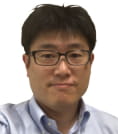
Professor
Graduate School of Arts and Sciences
University of Tokyo
Collaborator
| Shuji Ishihara | Associate professor Graduate School of Arts and Sciences The University of Tokyo |
Outline
Cell morphodynamics take distinct characters typically identified as epithelial, mesenchymal or amoeboid that often coexit in developing tissues. By focusing on the dynamical features, the project will develop means to characterize and classify cell-types and their state-transition according to their coordinates within the spectrum of possible morphotypes. Emphasis is placed on developing quantitative methodologies that links multi-modal microscopy measurements and mathematical modeling-based feature extraction to guide characterization and understanding of tissue deformation during development and regeneration.
Yuichiro Tsuchiya
Atlas of plant hormone flows at single-cell resolution
Grant No.:JPMJCR1924
Research Director
Yuichiro Tsuchiya
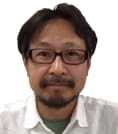
Designated Professor
Institute of Transformative Bio-Molecules
Nagoya University
Collaborator
| Yoshikatsu Sato | Specially Appointed Associate Professor Institute of Transformative Bio-Molecules Nagoya University |
| Masakazu Nanbo | Designated Associate Professor Institute of Transformative Bio-Molecules Nagoya University |
| Yu Hijikata | Designated Associate Professor Institutes of Innovation for Future Society Nagoya University |
Outline
Multicellular growth of plants are shaped on dynamic cell-to-cell flows of plant hormones. In this project, we will develop a small-molecule technology enabling direct visualization of the cell-to-cell movement of plant hormones. The microscopic parameters of the cell-to-cell movement will be obtained from each single cell and integrated into a graphical model representing the flow of plant hormones at tissue level. The resulting atlas of plant hormone flows with single-cell resolution will provide a basis of multicellular behavior in plants and accelerate our understanding of the their dynamic nature.
Katsumasa Fujita
Comprehensive molecular imaging of multicellular systems
Grant No.:JPMJCR1925
Research Director
Katsumasa Fujita
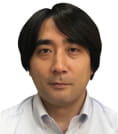
Professor
Graduate School of Engineering
The University of Osaka
Collaborator
| Mikiko Sodeoka | Deputy Director・Group Director Center for Sustainable Resource Science RIKEN |
| Hideo Tanaka | Specially Appointed Professor Graduate School of Medical Science Kyoto Prefectural University of Medicine |
Outline
To understand the biological functions produced through interactions between multiple cells and molecules, it is important to obtain morphological, material, and chemical information comprehensively in the scale ranging from molecule to tissue. In this project, we will develop optical microscopy techniques that can visualize multiple molecular species and their chemical conditions simultaneously with high temporal and spatial accuracies. The techniques will help us to understand the interactions of multiple biological molecules and how they contribute to the biological functions produced in multicellular systems.
Hironobu Fujiwara
Dynamic epithelial-mesenchymal interactions in the emergence of integumentary diversity
Grant No.:JPMJCR1926
Research Director
Hironobu Fujiwara
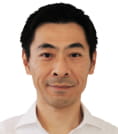
Team Leader
Center for Biosystems Dynamics Research
RIKEN
Collaborator
| Shuichi Onami | Team Leader Center for Biosystems Dynamics Research RIKEN |
| Masaharu Nagayama | Professor Research Institute for Electronic Science Hokkaido University |
| Itoshi Nikaido | Professor Institute for Integrated Research Institute of Science Tokyo |
Outline
Organisms have created a remarkable diversity in the structure and function of integument in order to adapt to various environments. However, the mechanism and theory, by which the integument develops various forms and functions from a 2D flat cell sheet, are not well understood. In this study, we take a new viewpoint that cell-cell interactions between heterogeneous tissues, such as epithelium and mesenchyme, and changes in their interactions are keys for the emergence of various integuments. We will address this issue through a single cell multi-omics analysis of spatially and temporally dynamic cell-cell interactions.
Yuichi Wakamoto
Establishing live-cell omics and cellular lineage analysis for understanding and controlling cancer persistence
Grant No.:JPMJCR1927
Research Director
Yuichi Wakamoto
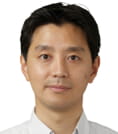
Professor
Graduate School of Arts and Sciences
The University of Tokyo
Collaborator
| Tetsuya J.Kobayashi | Professor Institute of Industrial Science The University of Tokyo |
| Takafumi Miyamoto | Assistant Professor Faculty of Medicine University of Tsukuba |
Outline
“Persistence” is a phenomenon in which a small fraction of cells in a clonal cellular population survives over an extended period under the exposure to lethal stress. In this project, we develop the new methods and techniques integrating Raman spectroscopic live-cell omics, single-cell measurement, statistical and mathematical theories of cellular lineage analysis, and controlling cellular population dynamics. We use these methods and techniques to understand the detailed molecular dynamics as well as the general mechanistic underpinnings behind the persistence of cancer cells against anti-cancer drugs and establish strategies of controlling the phenomenon.













